Hi Subscriber,
This is the Vermeer Newsletter number 51! Please excuse the exuberance, but I had no idea I would ever get this far.
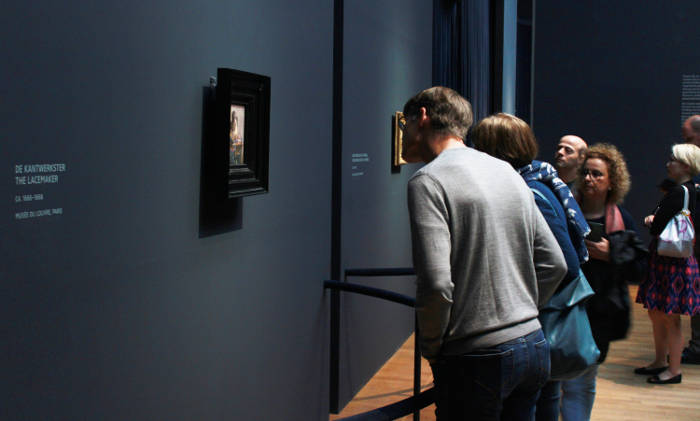 Rijksmuseum, Amsterdam
Rijksmuseum, Amsterdam Despite what many of those who had the fortune to attend the Rijksmuseum Vermeer retrospective might have feared—myself included—, the world did not not end at 6:00 PM, June 4, when he last two visitors (an American couple from North Carolina) left the exhibition.
Of course, the exhibition will have a lasting impact on the appreciation and study of Vermeer's art for years to come. It certainly did for me. A few surprises are already in the air.
I'll leave lots of facts (and a few of my ruminations of my own) about the exhibition at the bottom of this newsletter for those interested in these kinds of things.
My best,
Jonathan Janson
IN BRIEF
- Critically-acclaimed Close to Vermeer now showing in American cinemas (ongoing)
- Is the Philadelphia Museum of Art Lady with a Guitar a Vermeer or not? Special exhibition. June 10, 2023–the end of 2023 (ongoing)
- New book on Vermeer's Delft by 17th-century-Dutch-architect expert Wim Weve
- Vermeer's Jar": an art historical investigation of the jar in Vermeer's Woman with a Pearl Necklace
- Reveiw of the Rijksmusem Vermeer retrospective and relative catalogue, by Wayne Franits
- Vermeer's Girl with a Red Hat and the Leiden Collection Young Woman Seated at the Virginals to be exhibited in the Rijksmuseum Gallery of Honor (ongoing)
- Vermeer's Girl with a Red Hat to be shown in thematic exhibition at the KMSKA in Antwerp from October 20, 2023
- The Vermeer Rijksmuseum retrospective closed on June 4 (facts and impressions)
- Enigmatic Vermeer contemporary Jacobus Vrel exhibition at the Fondation Custodia / Collection Frits Lugt, Paris (ongoing)
- My Take! A very personal video on Vermeer Girl with a Pearl Earring by Essential Vermeer author, Jonathan Janson
1.
CLOSE TO VERMEER (now in American cinemas)
DOCMAKERS <https://www.docmakers.nl/films/dicht-bij-vermeer>
director and writer; Suzanne Raes
producer: Ilja Roomans
photography: Victor Horstink
sound: Alex Booy
distributor: Kino Lorber
cast: Gregor Weber, Pieter Roelofs, Anna Krekeler, Abbie Vandivere, Jonathan Janson
official USA trailer:
<https://www.youtube.com/watch?v=6KiuUSA1Z94>
viewing schedule in the United States:
<https://kinolorber.com/film/close-to-vermeer>
interview (English) with Suzanne Raes:
<https://www.youtube.com/watch?v=Dh5QNT8Md8Y>
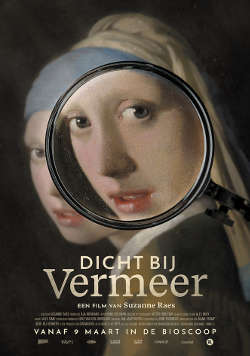
In the highly acclaimed documentary Close to Vermeer, award-winning director Suzanne Raes gives us a unique insight into the realization of the most ambitious Vermeer exhibition ever. She films Rijksmuseum curators Gregor Weber and Pieter Roelofs and conservators Abbie Vandivere and Anna Krekeler in their mission to shine a new light on Johannes Vermeer.
This fascinating documentary shows everything from the quiet diplomacy required to get the Vermeers to the Netherlands and the new knowledge gained by scanning the paintings layer by layer, to the shocking world news that one work may not be by Vermeer after all. Slowly we discover how Vermeer was able to depict reality so differently from his contemporaries. But above all, Close to Vermeer shows the infectious love of the curators and other protagonists for Vermeer’s art.
As Weber lovingly puts it, "A good exhibition should change your view of the world. Vermeer can really do that."
reviews:
"Close to Vermeer"
Edwin Arnaudin (Ashville Movies - June 9, 2023)
<https://www.ashevillemovies.com/new/close-to-vermeer>
"‘Close to Vermeer’: The 17th-Century Artist Remains a Mystery"
Michael Clark (The Epoch Times - May 22, 2023)
<https://www.theepochtimes.com/documentary-review-close-to-vermeer-the-17th-century-artist-remains-a-mystery_5282833.html>
"Close to Vermeer" (Roger Egbert.com - May 26, 2023)
Sheila O'Malley
<https://www.rogerebert.com/reviews/close-to-vermeer-movie-review-2023>
"Close to Vermeer, BBC4—behind the scenes of a landmark show" (Financial Times- May 30, 2023)
Dan Einav
<https://www.ft.com/content/7e735fbf-78f5-4cd7-bf68-5b0b27b7b350>
2.
COLLECTION HIGHLIGHT: LADY WITH A GUITAR
Philadelphia Museum of Art, Philadelphia
June 10, 2023–late 2023
<https://www.philamuseum.org/calendar/exhibition/vermeer-highlight>
from the PMA website:

Is it Vermeer’s own copy his The Guitar Player—or another artist’s version? For the last century, Philadelphia’s Lady with a Guitar has been the subject of fascination and questions. Long catalogued as a "Copy after Vermeer" in the John G. Johnson Collection at the museum, the work is either Vermeer’s own replica of his painting The Guitar Player in the collection of Kenwood House, London or another artist’s close copy of it.
Since the 1920s, scholars have puzzled over the relationship between the two pictures. The hairstyles are different–the Philadelphia musician does not have corkscrew ringlets–but otherwise, the images are nearly identical. Complicating the comparison is the fact that the London painting is one of Vermeer’s best-preserved works, while the Philadelphia version is in a compromised condition.
Most scholars have felt that the Philadelphia painting is a copy by another artist. However, in March 2023, researcher Arie Wallert reasoned that the Philadelphia painting could be by Vermeer himself, altered at some time in its past by aggressive cleaning attempts that removed much of the artist’s uppermost finishing layers of paint.
In light of the new findings, Philadelphia Museum of Art scientists, conservators and curators are pursuing further study of the painting in collaboration with colleagues at other institutions using the most advanced analytical tools available. The aim is to add to knowledge of the work’s construction and materials and, it is hoped, shed more light on who made it.
newspaper article:
"A damaged painting at PMA may be an original Vermeer. See it for yourself this weekend"
Rosa Cartagena (Philadelphia Enquirer - June 8, 2023)
<https://www.inquirer.com/arts/philadelphia-museum-of-art-vermeer-guitar-fake-mystery-20230608.html>
3.
DELFT: EN DE DELFTSE TOPOGRAFIE (Vermeer and the Delft Topography; Dutch with English summary)
Wim Weve
with numerous diagrams and 142 color and black and white images
2023
<https://wbooks.com/winkel/kunst/kunst-oude-kunst/vermeer-en-de-delftse-topografie/>
We all know two cityscapes by Johannes Vermeer, the View of Delft and The Little Street. Both appear very realistic. But to what extent do they show what the artist actually saw?
Wim Weve, the specialist of 17th-century Delft architecture, has extensively studied both masterpieces from a rigorous architectural/historical point of view and uncovered hitherto unknown facts. For example, the View of Delft turns out to be an accurate view of that city. Unlike previous hypotheses, Weve demonstrates that Vermeer did not alter or distort any buildings within the painting. He correctly depicted the bridge between the two gates, and he did not turn the Rotterdamsepoort to the right as it has sometimes been suggested
4.
"VERMEER'S JAR"
Christina An and Menno Fitski
The Rijksmusuem Bulletin Vol. 71 No. 2 (2023)
<https://bulletin.rijksmuseum.nl/article/view/15062/16516>
Christina An and Menno Fitski have co-authored an in-depth art historical study about about the jar in Vermeer's Woman with a Pearl Necklace. Whereas it was previously believed to have been painted after a Chinese example, they identify a Japanese prototype and describe the trade relations with Delft.
5.
EXHIBITION REVIEW (VERMEER | Amsterdam, Rijksmuseum, February10 –June 4, 2023 and catalogue, edited by Pieter Roelofs and Gregor J. M. Weber, 2023)
Wayne Franits
Renaissance Studies Vol. 0 No. 0
<https://onlinelibrary.wiley.com/doi/10.1111/rest.12880>
6.
Vermeer's Girl with a Red Hat and the Leiden Collection Young Woman Seated at the Virginal will be shown with the 4 Vermeer's of the Rijksmuseum Gallery of Honor until October 10, 2023.
7.
TURNING HEADS: BRUEGEL, RUBENS AND REMBRANDT
October 20, 2023–January 21, 2024
Koninklijk Museum van Schone Kunsten in Antwerpen, Antwerp
<https://kmska.be/en/turning-heads>
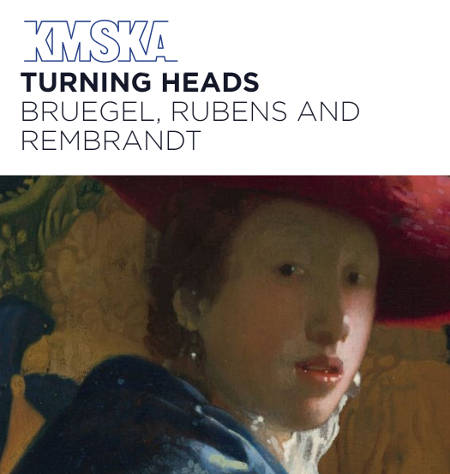
Before returning home to the National Gallery of Art, the Girl with a Red Hat will remain in the Rijksmuseum Gallery of Honor until October10, and then will be part of the exhibition Turning Heads; Bruegel, Rubens and Rembrandt held at the Antwerp KMSKA from October 20 to January 21, 2024.
from the gallery website:
Faces will be in the spotlight at the KMSKA this autumn, with the first major exhibition following the museum’s grand reopening, which focuses on the development of a Northern European genre, the tronie (head study).
Interest in the tronie, the old Dutch word for ‘face’ surged in the 17th century, when artists like Rubens, Rembrandt and Vermeer (Girl with a Red Hat) poured their talent into painting the human face.
Artists in the 16th and 17th centuries were responsible for a seismic upheaval. Faces had previously been the preserve of crowded biblical and mythological scenes. Now, however, they were shown individually and in all their glory. They were played with, studied and livened up with costumes and exaggerated expressions. Turning Heads is not an exhibition about portraits. In fact, it is very much not that. Artists of greater and lesser talent used anonymous models to carry out creative experiments on their own initiative.
8.
RIJKSMUSEUM RETROSPECTIVE
The historic Vermeer retrospective staged at the Amsterdam Rijksmuseum closed doors on the evening of June 4. One journalist wrote: "believe the hype," the exhibition was that good. For once, please believe the journalist.
First a few personal ruminations, if I may, and then lots of facts for people, like me, who can't get enough of them.
Perhaps the most profound Vermeer experience I have ever had was to have seen so many of his pictures in overall satisfactory state of conservation during three trips I made to Amsterdam. During my more than a dozen visits to the exhibition I happily shared them with fellow Vermeer enthusiasts from all over the world, and on a few occasions, I had the privilege to have viewed them practically alone, with no more than two or three visitors in the same room. Both experiences were rewarding in their own way.
What did I learn? The collective impact of so many works by Vermeer was more significant that I had anticipated, few times overwhelming, naturally, in a quiet way. I had expected to pay a visit to old friends that I had already met many times but found myself exploring uncharted territory. To put it simply, instead of finding answers to a few of my lingering uncertainties regarding Vermeer and his work, I'm happy to say that I've come away with more questions than I could have imagined.
I was also honored to have given a lecture at the International Vermeer Symposium in front of many of of the world's leading conservators, Dutch art and Vermeer specialists. I'm still attempting to digest two days of fascinating lectures. I spoke about the Leiden Collection Young Woman Seated at a Virginal, which I believe, for reasons unknown to me, has hitherto escaped a rigorous, collective art-historical analysis that an attribution to one of the greatest artists of Western culture would reasonably demand.
Since I've already crossed the line from objective reporting to shameless self promotion, allow me to indulge a just a bit more.
I had the privilege of participating in the acclaimed documentary Close to Vermeer reported above, by the award-winning director Suzanne Raes. The film furnishes unique insights into the realization of the most ambitious Vermeer exhibition ever and what makes a Vermeer a Vermeer. The success of the film, I believe, is that it realizes more than its stated objective. With narrative delicacy and finessed camera work Raes reveals not only the scope, logistics and mechanics behind the realization of such a complex endeavor, but what most visitors are largely blind to: the passions, curiosity, doubts, rivalries, hardball deal-making and disappointments that affects what you might call the professional Vermeer milieu.
Moreover, I had the great pleasure to have taken part as an adviser in two episodes of the successful Dutch TV program De Nieuwe Vermeer, in which the contestants attempt to bring to life various of Vermeer's lost works.
To prove that all this has not gone to my head, I'm currently hard at work on a series of new EV initiatives including an article about the exhibition that will feature a significant number of related newspaper articles, scholarly critiques and a photographic essay. I've uploaded the work in progress. Please feel free to make any suggestions or comments.

Exhibition facts
- On December 2, 2022, the Rijksmuseum announces a retrospective exhibition Johannes Vermeer for the first time in its history, including 28 paintings by Vermeer , of whose authorship 2 are still-debated (Saint Praxedis and Young Woman Seated at a Virginal). 7 paintings had never before been on public display in the Netherlands, including the three paintings from The Frick Collection in New York and the recently restored Girl Reading a Letter at an Open Window of the Gemäldegalerie Alte Meister in Dresden.
- The exhibition opens to the public at 9:00 AM, on February 10, 2023.
- Before the exhibition's official opening on February 10, 200,000 tickets are ordered.
- All tickets are sold on the second day of the exhibition, causing the museum shut down general sales on its website. Hyperallergicreports that a pair of e-tickets for the exhibition sold on eBay for $2,724 after 44 bids.
- In mid-February, the Rijksmuseum Friends Membership, which allows free untimed entrance to the Rijksmuseum for a full year as well as the Vermeer exhibition, exhausts its yearly quota.
- In March, extra tickets are made available to the public. This crashes the Rijksmuseum dedicated webpage, but are sold out in record time.
- In collaboration with the Mauritshuis, the Rijksmuseum hosts a two-day International Vermeer Symposium (Amsterdam, 28-29 March 2023. Forty of the most qualified specialists focus speak on the most recent technical and art historical research.
- Opening hours are extended from 9:00 to 23.00 on Thursday, Friday and Saturday of March and April.
- On April 2, the Girl with a Pearl Earring is removed from the exhibition in accordance with a previous agreement with the Mauritshuis.
- 2,600 tickets with an automated selection process are offered on June 2 and 3 until 2:00 in the morning.
- The exhibition closes at 6 p.m. on June 4, 2023. The last visitors out of the exhibition was an American couple from North Carolina.
- The exhibition was designed by architect and designer Jean-Michel Wilmotte.
- According to the museum’s press office, more than 100,000 copies of the VERMEER catalog were sold in June 5, 2023, “more than any other exhibition catalog in the history of the Rijksmuseum.” The catalog was designed by Dutch graphic designer Irma Boom, who has several works in the permanent collection of the Museum of Modern Art in New York.
- A total of 650,000 people from 113 countries visited the exhibition, 60,000 more than the previous record held by a Rembrandt exhibition in 1969. More than half (55 percent) of visitors for the Vermeer show came from the Netherlands. The top five international nations for visitors were France (17%), Germany (16%), United Kingdom (16%), the United States (14%), Belgium 14%, Poland 4%, Italy 3%, Spain 2.3%;Switzerland 1.6%; Canada 1.3%, Ireland 1.1%, Austria 0.8%, Japan 0.8%, Sweden 0.7% and Finland 0.6%.
- The standard admission fee for the show, which ran for 16 weeks, was €30.
- Visitors can stay in the exhibiton as long as they wish.
- Photography is permitted.
- The visitors rated the exhibition with an appreciation score of 8.7.
- The Rijksmuseum also contributed to the TV program De Nieuwe Vermeer (NPO1/Omroep Max).
- Two documentaries have been made about the exhibition. Director Suzanne Raes followed the preparations for the exhibition for her film Close to Vermeer, and Vermeer:The Greatest Exhibition appeared in the Exhibition on Screen series.
- Two podcast episodes were published, Life and Work of Vermeer and Camera Obscura and the Faith; The episode about the life and work of Vermeer is the Rijksmuseum's most-listened-to podcast episode ever (more than 27,000 downloads).
- The Rijksmuseum published the online course Vermeer, in which presenter Özcan Akyol shows the most beautiful details with Gregor J. M. Weber and Pieter Roelofs.
- Nearly 800,000 people visited the online interactive feature Closer to Vermeer showcasing all of the paintings that was narrated by actor Stephen Fry.
- For blind and partially sighted visitors an audio description tour was available and on March 31, there were guided tours during which paintings were described, objects to feel were available and music was played on the instruments from Vermeer's paintings.
- On 12 March and 3 May, special sensory-friendly evening openings.
- On March 19, a lecture in Dutch Sign Language and a lecture with subtitles is given for deaf and hard of hearing visitors.
- All the velvet curtains at the exhibition are given a second life. Some are reused in other museums (Kunsthal KAdE in Amersfoort and Museum Gouda), while others are processed by BORO*ATELIER into new products sold in the Rijksmuseum shop and some will be donated to charity foundations.
9.
JACOBUS VREL. LOOKING FOR CLUES OF AN ENIGMATIC PAINTER
Fondation Custodia / Collection Frits Lugt, Paris
June 17–September 17, 2023
<https://www.fondationcustodia.fr/Jacobus-Vrel-Enigmatic-Forerunner-of-Vermeer>
from the Fondation Custodia / Collection Frits Lugt website:
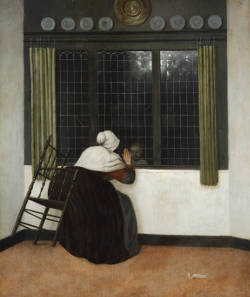
At first glance, nothing seems to link the formerly-obscure Dutch17th-century painter Jacobus Vrel to the famous Johannes Vermeer except their initials "JV." Nevertheless, many of their paintings share the same contemplative calm, the central role played by the female figures and, very often, a certain air of mystery. For these reasons, many works by Jacobus Vrel were for a long time attributed to Vermeer. Unfamiliar to the wider public, they have been intriguing and fascinating art historians for more than a century. Who then was this enigmatic seventeenth-century painter?
This monographic exhibition, the first to be devoted exclusively to Vrel, brings together major works kept in the great museums of Amsterdam, Brussels, Detroit, Munich, Vienna, etc., as well as from prestigious private collections. On show also is one of the best-known and most surprising genre scenes to be found in the Fondation Custodia: A Seated Woman Looking at a Child through a Window.
exhibition catalogue:
Jacobus Vrel: Enigmatic Forerunner of Vermeer
Quentin Buvelot, Bernd Ebert & Cécile Tainturier (eds.)
Munich, Hirmer Publishers
2021
256 pp., 224 illustrations in color
<https://www.hirmerverlag.de/us/titel-1-1/jacobus_vrel-2069/>
review:
"The Phantom of Jacobus Vrel" (Air Mail - June 17,2023)
Milton Esteroy
<https://airmail.news/issues/2023-6-17/the-phantom-of-jacobus-vrel>
10.
MY TAKE! - GIRL WITH A PEARL EARRING
Jonathan Janson
<https://www.youtube.com/watch?v=2oU6FCr6K34&t=560s>
I've released my latest video of My Take! YouTube channel, in which I've attempted to address the afterlife and problematic stardom of Vermeer's masterwork, Girl with a Pearl Earring, with a bit of humor.
I have discovered that mastering the video medium is far more challenging that I had anticipated but likewise more potentially communicative than dry text and images. As I won't tire of repeating, My Take! channel is a little space carved out from the Essential Vermeer website, a space where I can address each painting by Vermeer from a personal point of view, sharing my experiences, impressions and doubts and, of course, a few bits of information that just don't seem to fit in EV.
Needless to say, look, like, comment and subscribe.
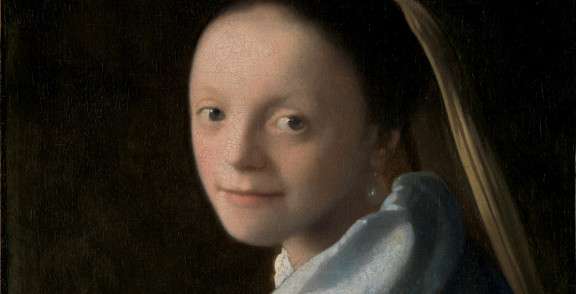
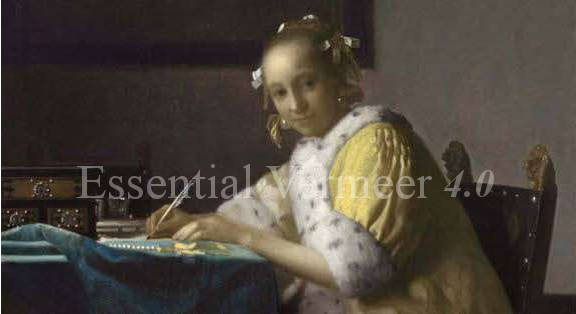



 or anything else that isn't working as it should be, I'd love to hear it! Please write me at:
or anything else that isn't working as it should be, I'd love to hear it! Please write me at: